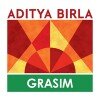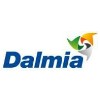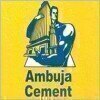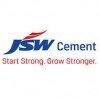Filter interviews by
Dalmia Bharat Group Interview Questions and Answers
21 Interview questions
Analyzing quality in civil projects involves assessing materials, processes, and outcomes to ensure standards are met.
Define quality standards: Establish clear criteria based on project specifications and industry standards.
Conduct regular inspections: Schedule site visits to evaluate workmanship and materials against quality benchmarks.
Utilize quality control tools: Implement tools like checklists, flowcharts, an...
Preparing a Bill of Quantities (BOQ) involves detailed measurement and estimation of materials and labor for construction projects.
Understand project scope: Review architectural and structural drawings to identify all elements.
Measurement: Accurately measure quantities of materials needed, such as concrete, steel, and finishes.
Rate analysis: Determine the cost of materials and labor based on current market rates.
C...
To check concrete, assess its quality through tests like slump, compressive strength, and visual inspections.
Conduct a slump test to measure workability; a typical slump for structural concrete is 4-5 inches.
Perform a compressive strength test using concrete cubes or cylinders; standard curing time is 28 days.
Inspect for surface defects like cracks, honeycombing, or discoloration, which can indicate poor mixing or...
Effective project proposals require thorough research, clear objectives, stakeholder engagement, and a well-structured plan.
Conduct thorough research on the project topic to understand the context and background.
Define clear objectives and goals to guide the project, such as increasing efficiency by 20%.
Engage stakeholders early to gather input and ensure their needs are addressed, like involving team members in b...
We procure a wide range of products and services to support our commercial operations.
Raw materials for production
Equipment and machinery
Office supplies
Services such as marketing, logistics, and IT support
Critical velocity is the minimum velocity needed for an object to overcome a specific force or resistance.
Critical velocity varies depending on the force or resistance being overcome
It is often used in fluid dynamics to determine the speed at which a fluid flow transitions from laminar to turbulent
For example, in aerodynamics, critical velocity is the speed at which an aircraft's lift equals its weight, allowing i...
Pitting in metal structures refers to localized corrosion that creates small holes or cavities on the surface.
Pitting corrosion occurs when a small area on the metal surface becomes anodic, while the surrounding area becomes cathodic.
It is often caused by exposure to corrosive environments, such as saltwater or acidic solutions.
Pitting can lead to structural weakness and eventual failure if not addressed.
Examples ...
Data security and privacy belong to the 'Social' area in the ESG framework.
Data security and privacy are important social issues that impact stakeholders such as customers, employees, and the general public.
Organizations need to protect sensitive data from breaches and unauthorized access to maintain trust and credibility.
Examples include implementing encryption protocols, access controls, and privacy policies to ...
Data security involves protecting digital data from unauthorized access, use, disclosure, disruption, modification, or destruction.
Data encryption is essential to protect sensitive information from being accessed by unauthorized parties.
Regularly updating security software and implementing firewalls can help prevent cyber attacks.
Access control measures, such as strong passwords and multi-factor authentication, ar...
Compliances are up-to-date with no major issues.
All necessary compliances have been met within the required timelines.
Regular audits have been conducted to ensure compliance with regulations.
No major issues or violations have been reported.
Training sessions have been conducted to educate employees on compliance requirements.
Documentation and record-keeping have been maintained accurately and up-to-date.
Examples of...
Dalmia Bharat Group Interview Experiences
31 interviews found
I applied via Own and was interviewed before Aug 2022. There were 3 interview rounds.

(1 Question)
- Q1. Salaries and benefits
(2 Questions)
- Q1. Experience and profiles
- Q2. Salary , increment, incentive
Interview Preparation Tips
I applied via Company Website and was interviewed in Apr 2024. There was 1 interview round.
(4 Questions)
- Q1. Project proposal needs important preparation like??
- Ans.
Effective project proposals require thorough research, clear objectives, stakeholder engagement, and a well-structured plan.
Conduct thorough research on the project topic to understand the context and background.
Define clear objectives and goals to guide the project, such as increasing efficiency by 20%.
Engage stakeholders early to gather input and ensure their needs are addressed, like involving team members in brains...
- Q2. Feasibility study of project
- Q3. Preparation of spares drawing with data
- Q4. Circuit of cement process
- Ans.
The circuit of cement process involves various stages from raw material extraction to final product packaging.
Raw materials (such as limestone, clay, and sand) are extracted and transported to the cement plant.
The raw materials are crushed, ground, and mixed to form a raw meal.
The raw meal is heated in a kiln to produce clinker.
The clinker is ground with gypsum to produce cement.
The cement is packed into bags or shippe...
Interview Preparation Tips
(2 Questions)
- Q1. Pcc and mcc details
- Q2. Process of cement production
- Ans.
Cement production involves a series of steps including crushing, grinding, heating, and mixing raw materials to form clinker.
Crushing: Raw materials like limestone, clay, and iron ore are crushed into small pieces.
Grinding: The crushed materials are then ground into a fine powder.
Heating: The powdered materials are heated in a kiln to a very high temperature.
Mixing: The heated materials are mixed with gypsum to form ce...
(3 Questions)
- Q1. Diffrent types of gears
- Ans.
Different types of gears include spur gears, helical gears, bevel gears, worm gears, and rack and pinion gears.
Spur gears have straight teeth and are the most common type of gear.
Helical gears have angled teeth for smoother operation but produce axial thrust.
Bevel gears have cone-shaped teeth and are used to change the direction of rotation.
Worm gears have a screw-like appearance and are used for high reduction ratios.
...
- Q2. What's critical velocity
- Ans.
Critical velocity is the minimum velocity needed for an object to overcome a specific force or resistance.
Critical velocity varies depending on the force or resistance being overcome
It is often used in fluid dynamics to determine the speed at which a fluid flow transitions from laminar to turbulent
For example, in aerodynamics, critical velocity is the speed at which an aircraft's lift equals its weight, allowing it to ...
- Q3. What's pitting in metal structures
- Ans.
Pitting in metal structures refers to localized corrosion that creates small holes or cavities on the surface.
Pitting corrosion occurs when a small area on the metal surface becomes anodic, while the surrounding area becomes cathodic.
It is often caused by exposure to corrosive environments, such as saltwater or acidic solutions.
Pitting can lead to structural weakness and eventual failure if not addressed.
Examples of pi...
I applied via Referral and was interviewed in Jan 2024. There were 2 interview rounds.
(3 Questions)
- Q1. Tell me about yourself
- Q2. What is your expectations
- Q3. How soon you will join if selected
(3 Questions)
- Q1. Brief description of Procurement process
- Ans.
Procurement process involves sourcing, purchasing, and managing goods and services.
Identifying needs and requirements
Sourcing suppliers and obtaining quotes
Negotiating contracts and terms
Making purchases and receiving goods
Managing supplier relationships
- Q2. Why procurement being mechanical engineer
- Q3. What do you procure
- Ans.
We procure a wide range of products and services to support our commercial operations.
Raw materials for production
Equipment and machinery
Office supplies
Services such as marketing, logistics, and IT support
I applied via Naukri.com and was interviewed before Dec 2023. There was 1 interview round.
(3 Questions)
- Q1. How to check the concrete ?
- Ans.
To check concrete, assess its quality through tests like slump, compressive strength, and visual inspections.
Conduct a slump test to measure workability; a typical slump for structural concrete is 4-5 inches.
Perform a compressive strength test using concrete cubes or cylinders; standard curing time is 28 days.
Inspect for surface defects like cracks, honeycombing, or discoloration, which can indicate poor mixing or curi...
- Q2. How to prepare BOQ & estimation?
- Ans.
Preparing a Bill of Quantities (BOQ) involves detailed measurement and estimation of materials and labor for construction projects.
Understand project scope: Review architectural and structural drawings to identify all elements.
Measurement: Accurately measure quantities of materials needed, such as concrete, steel, and finishes.
Rate analysis: Determine the cost of materials and labor based on current market rates.
Compil...
- Q3. How to analysing of Quality?
- Ans.
Analyzing quality in civil projects involves assessing materials, processes, and outcomes to ensure standards are met.
Define quality standards: Establish clear criteria based on project specifications and industry standards.
Conduct regular inspections: Schedule site visits to evaluate workmanship and materials against quality benchmarks.
Utilize quality control tools: Implement tools like checklists, flowcharts, and sta...
Interview Preparation Tips
- Civil Construction
- Safety
(2 Questions)
- Q1. Past experience
- Q2. Work from office
- Q1. How to check the. Material comparative
- Q2. Waste Handling Guide lines
- Q3. Waste Handling Check list
I applied via Naukri.com and was interviewed in Aug 2023. There were 3 interview rounds.

Mass transfer &heat transfers
(3 Questions)
- Q1. Cement mill vrm technical question
- Q2. Units of mesurments, Mmwc Kg/m2 Mmwg
- Q3. Heat transfer &mass transfer balances
Interview Preparation Tips
I applied via Naukri.com and was interviewed in Jan 2024. There were 2 interview rounds.
(1 Question)
- Q1. About work profile
- Ans. Several to B2B network
(1 Question)
- Q1. Serving a B2B NETWORK
- Ans.
Serving a B2B network involves understanding the needs of businesses and providing tailored solutions to help them succeed.
Develop strong relationships with key decision makers in client companies
Customize products or services to meet the specific needs of each business
Provide excellent customer service and support to ensure client satisfaction
Stay updated on industry trends and competitors to offer valuable insights t...
Top trending discussions






Dalmia Bharat Group Interview FAQs
The duration of Dalmia Bharat Group interview process can vary, but typically it takes about less than 2 weeks to complete.
Tell us how to improve this page.
Dalmia Bharat Group Interviews By Designations
- Dalmia Bharat Group Assistant Manager Interview Questions
- Dalmia Bharat Group Executive Engineer Interview Questions
- Dalmia Bharat Group Commercial Executive Interview Questions
- Dalmia Bharat Group Senior Executive Interview Questions
- Dalmia Bharat Group Associate/Senior Associate -(Nontechnical) Interview Questions
- Dalmia Bharat Group Business Development Manager Interview Questions
- Dalmia Bharat Group Design Engineer Interview Questions
- Dalmia Bharat Group Transport Manager Interview Questions
- Show more
Interview Questions for Popular Designations
Overall Interview Experience Rating
based on 49 interview experiences
Difficulty level
Duration
Interview Questions from Similar Companies
Dalmia Bharat Group Reviews and Ratings
based on 405 reviews
Rating in categories
|
Senior Executive
71
salaries
| ₹4.9 L/yr - ₹10 L/yr |
|
Assistant Manager
64
salaries
| ₹6 L/yr - ₹14 L/yr |
|
Deputy Manager
57
salaries
| ₹11.4 L/yr - ₹18.5 L/yr |
|
Area Sales Officer
39
salaries
| ₹3.5 L/yr - ₹7.8 L/yr |
|
Manager
36
salaries
| ₹14 L/yr - ₹24 L/yr |

UltraTech Cement

JK Cement

Grasim Industries

ACC
- Home >
- Interviews >
- Dalmia Bharat Group Interview Questions













